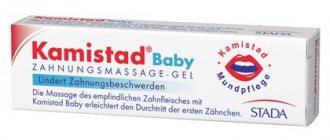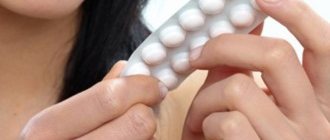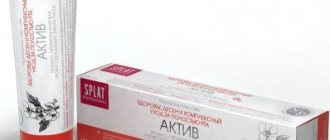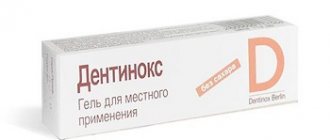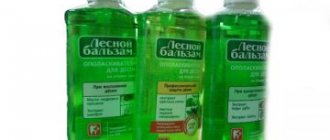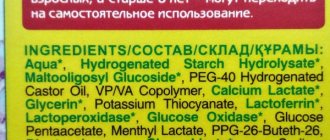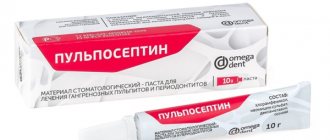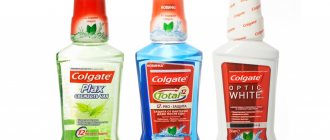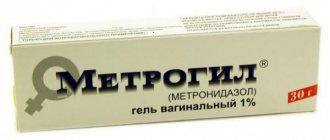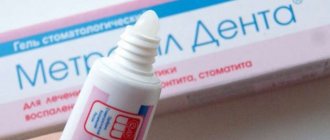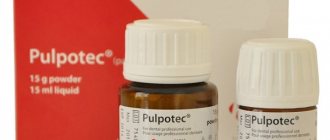Calcium gluconate: what is it and what is it for?
This drug is a dietary supplement that compensates for the lack of calcium in the body. This macronutrient performs a number of important functions:
- promotes the transmission of nerve impulses;
- ensures normal muscle function, and, in particular, the heart muscle;
- part of bones and teeth;
- participates in the process of blood clotting.
Calcium deficiency in the body can lead to a condition such as tetany.
In addition, due to the effect of calcium, such as reducing the permeability of the vascular wall, this drug has an anti-inflammatory and antiallergic effect.
Solutions
Remineralizing solutions
are preparations containing macro- and microelements necessary for the mineralization process. The mineralizing components included in solutions for local caries prevention are represented by compounds of fluorine, calcium, phosphorus and other trace elements. Such solutions can be used in the form of rinses and mouth baths by the patient himself at home or in children's organized groups (fluoride-containing mouth rinses are presented above). However, their use in the form of applications, electrophoresis and phonophoresis on the surface of teeth is more effective.
A significant number of formulations of remineralizing solutions have been proposed. Without going into detail about their review, we will present the most widely used at present.
Fluorine-containing solutions for applications, electrophoresis and phonophoresis, as a rule, contain fluorine compounds such as sodium fluoride (0.2%, 1-2%), tin fluoride (8-10%), sodium monofluorophosphate, potassium fluoride, amino fluorides . From calcium preparations
For applications and electrophoresis, calcium gluconate (10% solution), calcium glycerophosphate (2.5%), and calcium chloride (10%) are used.
Preparations containing phosphorus
, are represented by sodium monofluorophosphate and sodium salt of hexaphosphoric acid.
Calcium ions and phosphate ions must be added to remineralizing solutions in such a concentration that saliva is a supersaturated solution. The optimal ratio of calcium and phosphate in solution is 1:1.6 or higher. Complex remineralizing solutions
include Remodent and Profocar.
The drug Remodent was developed at the Riga Medical Institute in 1975 by G. N. Pakhomov, E. V. Borovsky, A. Ya. Luste and is currently registered in 11 countries around the world. Remodent powder is highly purified bone meal from the jaw bones of young cattle, obtained by lyophilization or vacuum drying.
Remodent composition: calcium - 4.35%, phosphorus - 1.36%, magnesium - 0.15%, potassium - 0.20%, sodium - 16.0%, chlorine - 30.0%, organic substances - 44, 0%, manganese, iron, zinc, copper and other trace elements - up to 100%.
The drug is available in the form of powder, tablets and granules, and is included in tooth powders, pastes, gels, and solutions. A 3% solution of remodent powder is used for applications and mouth rinses (15-25 ml of solution per rinse) 1-2 times a week for 10 months a year. Profokar is a multicomponent remineralizing agent with the optimal content and ratio of the basic chemical elements necessary to build the crystal lattice of enamel apatites. Contains calcium, phosphorus, fluorine, magnesium, iron, zinc, potassium, sodium, chlorine, copper, lead. The material for its production is demineralized bovine tubular bones. Unlike Remodent, it contains fluoride. It is a clear liquid with a barely noticeable whitish sediment and a salty taste. Can be used for mouth rinses and applications.
When is the drug prescribed?
Experts recommend using this drug for:
- osteoporosis;
- rickets and osteomalacia - conditions in which vitamin D metabolism is impaired;
- increased levels of phosphates in the blood in patients with renal failure;
- presence of high calcium needs: during pregnancy and lactation;
- poor diet;
- bone fractures;
- postmenopausal calcium deficiency;
- chronic diarrhea.
In addition, the drug as a component of complex therapy is used in dermatovenerology for the treatment of itchy dermatoses, urticaria, and angioedema. It is also used for the treatment of bleeding of various etiologies and nutritional dystrophy.
Preparations for remineralization of teeth
The classic dental gel, which is used in remotherapy, contains two basic components - xylitol and calcium glycerophosphate. The first inhibits pathogenic bacteria that stimulate the development of caries. The second forms an invisible film on the surface of the elements, which prevents the leaching of calcium.
The world leader among remineralization preparations is R.O.K.S. gel. Medical Minerals without fluoride. The drug is used in two ways: the composition is applied to the teeth using a toothbrush (applicator) or the gel is placed in mouth guards, which are worn on the teeth for up to half an hour.
Other products for strengthening enamel include products Blend-a-med, Fluocal, Fluodent, Global White (for sensitive teeth).
What does a calcium gluconate injection do?
Calcium gluconate injections are best known as an adjuvant treatment for allergic diseases. However, they are also used to treat pathology of the parathyroid gland, in which there is an increased excretion of calcium from the body.
In addition, injections are also prescribed for conditions such as:
- eclampsia;
- nephritis;
- hyperkalemia;
- liver intoxication.
Injections of calcium gluconate help reduce the intensity of itching in atopic dermatitis, psoriasis and eczematous rashes.
Using the drug for allergies
If allergic reactions occur, calcium gluconate is a safe and effective remedy, the use of which practically cannot lead to an overdose. When the drug enters the body, the permeability of the vascular wall decreases and the allergen practically does not penetrate into the bloodstream. Thus, the development of an allergic reaction is inhibited. Calcium gluconate can be taken for preventive purposes.
The duration of the course depends on the characteristics of the disease. Calcium gluconate is prescribed by specialists together with antihistamines.
Dental care after remotherapy
After therapy, the doctors of our dental clinic advise parents to continue the natural remineralization of enamel at home, namely:
- give the child vitamins, calcium-containing products to strengthen the enamel layer, vitamin D, fish oil;
- regularly brush your child’s teeth using special children’s toothpastes;
- rinse the baby’s mouth with pharmaceutical compounds;
- enrich the child’s diet with dairy products, meat, fish;
- limit intake of sweets and sour foods.
How to give calcium gluconate to children
The drug can be given to children from the first year of life if indicated. At the age of up to 12 months, the optimal daily dose is 3 tablets. Children 1-4 years old are recommended to take 6 tablets per day. Children under 9 years of age can take from 6 to 12 tablets per day, depending on the doctor’s recommendations. Adolescents under 14 years of age can take 12-18 tablets per day.
The daily dose of the drug is divided into 2-4 doses.
Calcium gluconate in the form of a solution is used to treat children of any age as an emergency treatment for severe allergic reactions and the development of bleeding.
Caries-preventive varnishes
Remineralizing solutions do not have a prolonged effect on the enamel surface, so special mineral-containing compositions have been developed that can be fixed on the tooth surface for a relatively long time. These are mainly fluorine-containing varnishes.
Advantages of fluoride varnishes:
- Long-term retention on the surface of tooth enamel, causing a higher level of fluoride transfer from varnish to enamel.
- No need for additional procedures (for example, electro- or phonophoresis).
- Optimal permeability of the varnish film, ensuring the supply of fluoride to the tooth enamel in sufficient quantities.
The varnish film on the tooth is in constant contact with saliva, which promotes the constant release of ions into saliva and their penetration into the tooth enamel. Currently, two trends have emerged in the development of caries-preventive dental varnishes: - based on the achievements of modern polymer chemistry, the creation of a mechanically strong, impenetrable, long-term coating of the surface of tooth enamel with elastic, but fairly rigid adhesives based on acrylates, polyurethane, epoxy resins and other materials; so-called soft varnishes (including those made from plant materials), which remain on the teeth for a short time, while managing to release fluoride into the tooth enamel. This role is played by varnish compositions based on natural resins. The optimal concentration of fluorine in varnish is 2.9-3.0%. It has been established that a 12-hour application of Durafat-type varnish increases the concentration of fluoride in the enamel of extracted human teeth from 300 to 2000 ppm. At the same time, coating with “hard” varnish sharply reduces the permeability of the enamel, which can adversely affect the metabolic processes in it in children. Therefore, the use of fluoride varnishes of this class in children is limited. In childhood, it is preferable to use a more permeable soft varnish based on tree resin; it allows you to relatively quickly treat even wet teeth by gluing to them. To achieve a caries-preventive effect, it is recommended to apply varnishes every 3 to 6 months, mainly for people at high risk of developing caries. Varnishes are effective for dental hypersensitivity. In addition to fluoride, other mineralizing components can be added to caries-preventive varnishes. Some fluoride-containing gels are similar in purpose to fluoride-containing varnishes, which, like varnishes, are applied to the surface of the teeth and, when dry, form a thin film on them that can be held relatively for a long time. These include Belagel F and Bela-gel Ca/P (VladMiVa, Russia) - drying water-based gels without organic solvents, Fluoridin gel N5 (VOCO) - a gel based on tree resin containing sodium fluoride (5%). also includes protective varnish Cervitec (Vivadent). The varnish does not contain mineralizing components, but contains chlorhexidine (1%) and thymol (1%), which reduces bacterial activity in dental plaque. The use of varnish reduces the colonization of bacteria on the tooth surface, disrupts their metabolism, reduces the production of lactic acid, and the sensitivity of the tooth neck by closing the dentinal tubules. A special group of fluoride carriers are fluoride-containing paper and paraffin discs. The disc is fixed in the tip on the disc holder, fluoride is rubbed into the tooth surface at low speeds using reciprocating (up and down) and circular movements. Rubbing is recommended to be carried out 2-3 times with an interval of 1-2 days (2-4 courses per year). Fluoride-containing pills have also been developed that can be fixed on the buccal surfaces of the first molars and provide a slow continuous release of fluoride into the oral cavity.
If you find an error, please select a piece of text and hold LEFT Ctrl and press Enter.
You can send no more than 5 messages in 30 minutes!
Liked? Tell your friends!
For whom the drug is contraindicated
The drug is not used in patients with:
- intolerance to any of the components;
- increased calcium levels in the blood;
- tendency to form blood clots;
- sarcoidosis;
- severe atherosclerosis;
- urolithiasis with the formation of calcium stones.
Calcium gluconate is also not prescribed to patients taking cardiac glycosides.
Similar drugs:
- Dicynone Oral tablets
- Rotocan-VILAR (Rotocanum) Extract for topical use and oral administration
- Vicasol Oral tablets
- Sodium alginate Powder
- Etamsylate Solution for intravenous and intramuscular administration
- Tranexam Solution for intravenous administration
- Dicynone Solution for intravenous and intramuscular administration
- Hydrogen peroxide Topical solution
- Aprotex Solution for infusion
- Calcium gluconate Substance-powder
** The Drug Directory is intended for informational purposes only. For more complete information, please refer to the manufacturer's instructions. Do not self-medicate; Before starting to use the drug Calcium gluconate, you should consult a doctor. EUROLAB is not responsible for the consequences caused by the use of information posted on the portal. Any information on the site does not replace medical advice and cannot serve as a guarantee of the positive effect of the drug.
Are you interested in the drug Calcium gluconate? Do you want to know more detailed information or do you need a doctor's examination? Or do you need an inspection? You can make an appointment with a doctor - the Euro lab is always at your service! The best doctors will examine you, advise you, provide the necessary assistance and make a diagnosis. You can also call a doctor at home . Euro lab clinic is open for you around the clock.
** Attention! The information presented in this medication guide is intended for medical professionals and should not be used as a basis for self-medication. The description of the drug Calcium gluconate is provided for informational purposes and is not intended for prescribing treatment without the participation of a doctor. Patients need to consult a specialist!
If you are interested in any other drugs and medications, their descriptions and instructions for use, information about the composition and form of release, indications for use and side effects, methods of use, prices and reviews of drugs, or you have any other questions and suggestions - write to us, we will definitely try to help you.
Overdose symptoms
With prolonged use of the drug, accumulation of calcium salts in the body is possible. In case of overdose, the following manifestations are observed:
- dyspeptic disorders: constipation, nausea and vomiting;
- increased fatigue and irritability;
- abdominal pain;
- constant thirst;
- muscle weakness and decreased blood pressure.
If these symptoms appear, you must stop taking the drug. Particularly severe cases may require intravenous calcitonin.
What symptoms indicate the need for remineralization?
An early manifestation of demineralization is a focal lesion of the enamel layer, which is most often diagnosed in children under 11 years of age. Light spots appear on the surface of children's teeth (or at their junctions). The formations may be barely noticeable and cover the entire element. Among the secondary signs of weakening enamel:
- decreased dental shine;
- dullness of elements;
- porosity, surface roughness of elements;
- darkening of white spots - color change to brown.
The demineralization process cannot be stopped without taking proper measures. When primary signs of destruction of the surface layer appear, the child should be shown to the dentist.
